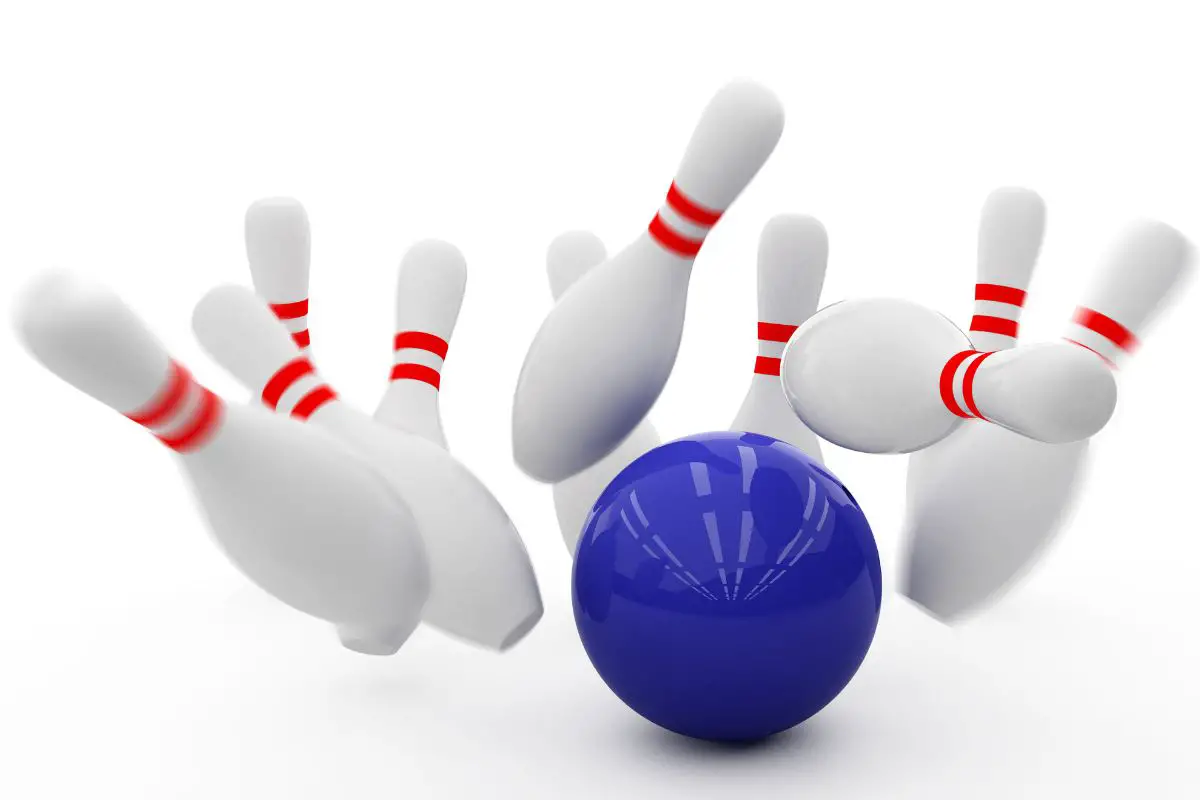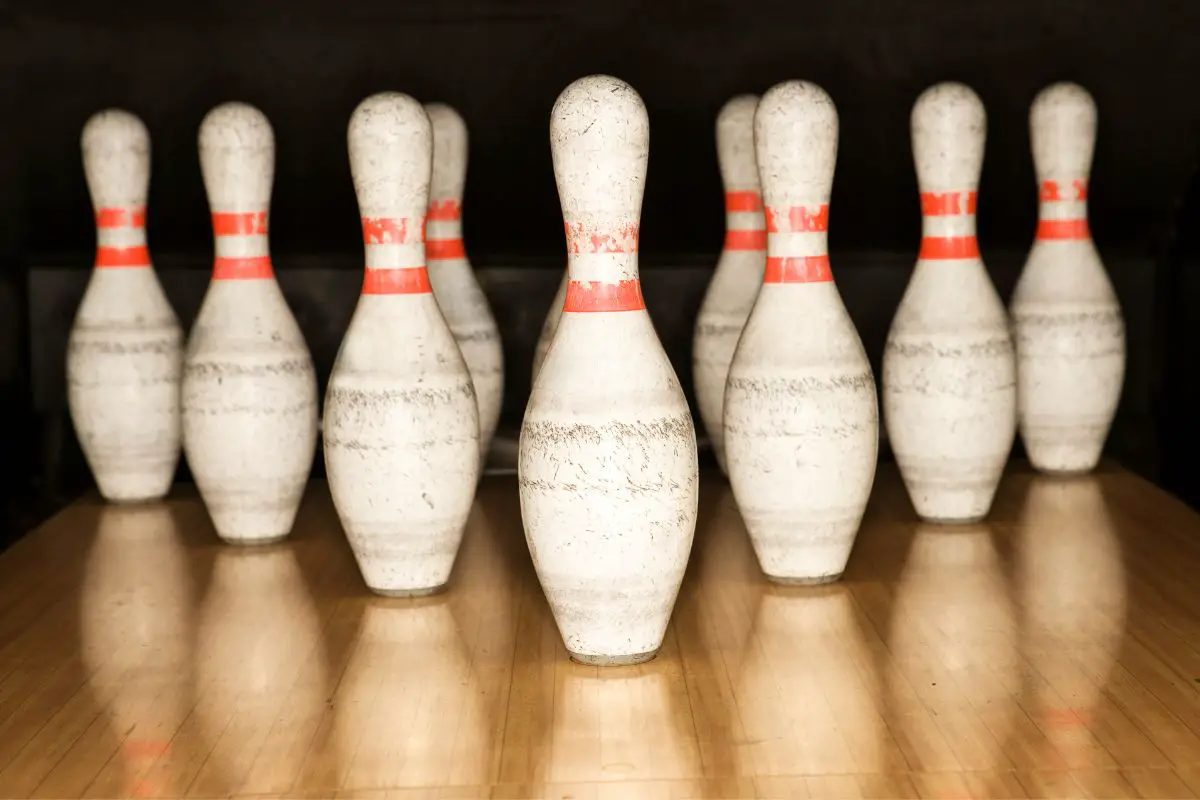Keeping the score of our bowling games manually is probably something we won’t have to do when visiting our local bowling alley.

Yet, it is important for keen players and professionals to understand the fundamentals of how the scoring system works. So don’t run for the pen and paper just yet.
We are lucky that today we are able to turn up to the alley and the scoring and resetting of the pins are all done for us.
We just get to enjoy the fun part!
But as a bowler, you need to be able to understand what the scores on the board mean as well as calculate what scores you would need to obtain to beat an opponent if you’re playing competitively.
Or even if you just want to beat your friends. After all, who doesn’t like winning?
Score Keeping Basics
Each game of bowling consists of 10 turns or ‘frames’ bowled by each player.
One frame gives the player two chances to knock the pins down – with the exception of the last frame.
Bowling is fairly straightforward, the more pins you knock down, the higher the score. The highest score or perfect score in bowling is 300 (all strikes).
When you find your name on the scoring board, you will notice a box for each frame representing each turn you have.
Within the main scoring sheet box is a smaller box in the top right-hand corner.
The automated system logs how many pins you manage to knock down on your first attempt and writes this in the space to the left of the small box, the second attempt is logged in the small box itself.
Therefore the total number of pins you knocked down will be displayed in a larger font in the main scoring box. A maximum of 30 points can be awarded in a single frame.
So if you’re wondering how well your game is going, keep an eye on the larger number in the main scoring box.
Scoring Spares, Strikes, And Splits
Spares and strikes are great for boosting your average score. Let’s go through what they are:
Knocking down all 10 pins using both of your chances in one frame is known as scoring a spare. This is denoted on the scoring board using a forward slash (“/”).
The scoreboard still shows you how many pins you knocked down on your first attempt in the space to the left of the smaller box, however, the smaller box will now have a slash through it.
A strike on the other hand is when you bowl down all 10 pins in one try. This is shown on the scoreboard with an X marked through the smaller box on the relevant frame.
A split is a formation that occurs when a player has bowled the first ball of their frame and knocks down the headpin leaving two or more pins with a large split in the middle.
Essentially, if the ball rolls right through the middle and leaves some pins on either side you have scored a split.

Strikes
These types of scores are especially valuable as they allow you to add on the pins you knock down from the next frame to the 10 you have just knocked down.
To demonstrate, if you’ve just scored a strike of 10 pins and in the next frame you knock down 5 pins and 3 pins, the total would equal 18.
Scoring A Double
Two strikes in a row are referred to as a double. If you score a double, you add 20 points to the number of pins you knock down in the next frame e.g. 20 + 5.
Spares
When bowling a spare it’s a little different, you still get to add the 10 pins you knocked down from your spare however, you can only add the number of pins you knocked down on the first bowl of your next frame.
So, if you bowled a spare and then knocked down 6 pins on your next bowl the total would come to 16.
Splits
This is shown on the scoreboard with a circle around the number of pins you knocked over.
If the subsequent bowl doesn’t knock down any of the remaining pins then a small dash will appear in the small box of the relevant frame.
Fouls
One more thing to look out for on the scoreboard is a foul. A foul occurs when the player steps over the foul line when bowling.
The foul line separates the approach from the lane and stretches from gutter to gutter.
An ‘F’ will appear on your score sheet if this error happens and any pins you knock down are void and won’t be counted.
The Final Bowl
The final frame or last turn is the only part of the scoreboard that will be different. There are three small boxes instead of one.
Unfortunately, if you score a spare or strike in this frame you aren’t able to add the bonus points to your final score.
The reason for the three boxes depends on how lucky you’re feeling or how good of a bowler you are.
Final Thoughts
Some bowlers today may prefer to write their scores with pen and paper and calculate it themselves, but if that doesn’t work for you the computerized system found in bowling alleys is highly accurate and reliable.
The only thing you may find difficult about calculating your score by hand is remembering how many pins knocked down correspond to a strike and a spare.
As a reminder: if you score a spare it’s 10 plus however many you knock down on the first go of the subsequent frame. If you score a strike, it’s 10 plus the next two bowls.
And remember to have fun!
- A Comprehensive Guide to the Top Bowling Movies of All Time - December 23, 2023
- Bowling Shoes Selection Guide: How to Choose the Right Fit - September 27, 2023
- Bowling Ball Buying Guide: How to Choose the Right Ball for You - September 23, 2023








